John von Neumann: The Genius Who Shaped the Modern World
Introduction: The Polymath of the 20th Century
John von Neumann was one of the most brilliant and influential minds of the 20th century. A mathematician, physicist, computer scientist, and polymath, von Neumann made groundbreaking contributions across a wide range of disciplines—from quantum mechanics to game theory, and from computer architecture to nuclear physics. His work laid the foundation for many technologies and theories that define our modern world.
Born in Budapest, Hungary, in 1903, von Neumann displayed extraordinary intellectual abilities from an early age. By his mid-twenties, he was already recognized as a leading mathematician in Europe. Fleeing the rising tensions of World War II, he moved to the United States, where his work became instrumental in scientific and military advancements.
Early Life and Education
John von Neumann was born on December 28, 1903, into a wealthy Jewish family in Budapest. His father, Max Neumann, was a banker, and his mother, Margit Kann, came from a well-educated family. Young John (or János, his Hungarian name) showed prodigious talent early on, reportedly mastering calculus by the age of eight and conversing in ancient Greek by twelve.
Von Neumann attended the Lutheran Gymnasium in Budapest, one of the best schools in the city, where he excelled in mathematics and languages. Recognizing his son’s genius, Max Neumann hired private tutors to further nurture his abilities. By the time von Neumann entered university, he had already caught the attention of Hungary’s top mathematicians.
In 1921, he enrolled at the University of Budapest to study mathematics but simultaneously attended the University of Berlin and later ETH Zurich to study chemistry, at his father’s insistence—an attempt to ensure his son had a financially stable career. However, mathematics remained his true passion, and by 1926, he had earned his Ph.D. in mathematics with a thesis on set theory.
Contributions to Mathematics
Von Neumann’s early mathematical work spanned diverse fields, including set theory, quantum mechanics, and functional analysis. One of his major contributions was the development of the axiomatic foundations of set theory, which helped resolve contradictions in earlier formulations by Ernst Zermelo and Abraham Fraenkel.
In the late 1920s, von Neumann shifted his focus to the emerging field of quantum mechanics. His rigorous mathematical formulation of quantum theory, particularly his work on operator theory and the concept of Hilbert spaces, provided a solid foundation for the discipline. He collaborated with luminaries such as David Hilbert and later played a crucial role in the development of the atomic bomb through his expertise in mathematical physics.
Von Neumann and the Manhattan Project
With the outbreak of World War II, von Neumann’s expertise became indispensable to the Allied war effort. In 1943, he joined the Manhattan Project, the secret American initiative to develop nuclear weapons. His contributions were multifaceted—he worked on the implosion mechanism necessary for the plutonium bomb (tested in the Trinity explosion and later used in Nagasaki) and helped refine mathematical models for explosive lenses.
Beyond weapon design, von Neumann’s insights into shockwaves and fluid dynamics proved critical not just for the bomb but also for later advancements in aeronautics and meteorology. His ability to translate complex physical phenomena into mathematical algorithms made him an invaluable asset at Los Alamos.
The Birth of Game Theory
During the same period, von Neumann began formulating what would later become modern game theory—a mathematical framework for analyzing strategic interactions between rational decision-makers. His 1944 book, *Theory of Games and Economic Behavior*, co-authored with economist Oskar Morgenstern, revolutionized economics, military strategy, and social sciences.
Von Neumann’s minimax theorem demonstrated how players in zero-sum games could optimize strategic decisions, influencing fields as diverse as economics, evolutionary biology, and artificial intelligence. Decades later, his work would underpin advancements in algorithmic trading, political negotiation, and even cybersecurity.
The Von Neumann Architecture
Perhaps von Neumann’s most enduring legacy is his foundational work in computer science. In 1945, he drafted the *First Draft of a Report on the EDVAC*, which outlined the architecture of modern computers. The "von Neumann architecture" introduced the concept of a stored-program computer, where both data and instructions reside in the same memory system.
Before von Neumann’s model, computers were hardwired for specific tasks. His design allowed for reprogramming without physical modifications, making computers vastly more flexible and powerful. Nearly all modern computers—from smartphones to supercomputers—still adhere to this architecture.
Continued Influence and Later Life
By the late 1940s, von Neumann had become a prominent figure in American science, serving as a consultant to government agencies, corporations, and academic institutions. He worked on the development of the hydrogen bomb, contributed to early weather prediction models, and helped establish the field of cellular automata—a precursor to modern simulations in biology and artificial life.
Von Neumann was also known for his legendary intellect and memory. Colleagues recounted his ability to perform complex calculations mentally, recite entire books from memory, and engage in multiple deep conversations simultaneously.
However, his brilliant mind was tragically cut short. In 1955, he was diagnosed with cancer, likely due to exposure to radiation during his nuclear research. Despite his deteriorating health, he continued working until his death on February 8, 1957.
Conclusion of Part One: A Legacy of Genius
John von Neumann’s impact on science and technology cannot be overstated. His work reshaped multiple academic fields and laid the groundwork for innovations that define the modern era—digital computing, artificial intelligence, economic theory, and advanced weaponry.
In the next part of this article, we'll delve deeper into his contributions to computer science, his visionary predictions about technology’s future, and how his ideas continue to influence researchers worldwide. Stay tuned for more on the enduring legacy of John von Neumann.
Von Neumann’s Vision: Computers and Artificial Intelligence
John von Neumann’s contributions to computing extended far beyond the architecture that bears his name. He was among the first to foresee the transformative potential of computers, not just as calculating machines but as tools capable of simulating complex systems, from weather patterns to human cognition. His insights into machine learning and artificial intelligence (AI) were decades ahead of their time.
In the late 1940s and early 1950s, von Neumann explored the idea of self-replicating machines—a concept later formalized as "von Neumann probes" in theoretical space exploration. He pondered whether machines could emulate biological reproduction, an idea that would inspire early research into genetic algorithms and artificial life. His work on cellular automata, particularly the "von Neumann universal constructor," demonstrated mathematically how simple rules could generate complex, self-replicating patterns—a precursor to modern AI and complexity science.
The Birth of Numerical Weather Prediction
Another area where von Neumann left an indelible mark was meteorology. Before computers, weather forecasting relied heavily on empirical observations and intuition. Von Neumann recognized that the chaotic nature of atmospheric systems could be modeled using differential equations processed by high-speed calculators.
In 1946, he established the Meteorology Project at Princeton’s Institute for Advanced Study (IAS), assembling a team to develop numerical weather prediction models. Using early computers like the ENIAC, his team simulated weather patterns by breaking them down into mathematical equations. Though limited by the primitive technology of the time, this work laid the foundation for today’s highly accurate climate models and hurricane tracking systems.
Von Neumann and the Hydrogen Bomb
After World War II, von Neumann’s expertise in shockwaves and nuclear physics made him a key figure in the development of thermonuclear weapons. He worked closely with Edward Teller and Stanisław Ulam on the Teller-Ulam design, which became the blueprint for the hydrogen bomb.
Von Neumann’s mathematical prowess was critical in solving the problem of energy transfer between the fission "trigger" and the fusion fuel core—a puzzle that had stalled the project. His calculations ensured the feasibility of the H-bomb, tested successfully in 1952 with the Ivy Mike explosion. Though politically controversial, this work cemented von Neumann’s reputation as a strategist who understood the terrifying yet unavoidable role of nuclear deterrence in the Cold War.
Advising Governments and Shaping Policy
Beyond pure science, von Neumann became one of the most sought-after advisors in Cold War America. He served on the U.S. Atomic Energy Commission (AEC), advised the CIA and RAND Corporation, and influenced military strategy through his work on game theory. His concept of "mutually assured destruction" (MAD) underpinned nuclear deterrence policies, arguing that rational actors would avoid war if annihilation was guaranteed on both sides.
Unlike many scientists who later regretted their involvement in weapons development, von Neumann maintained that technological progress was inevitable and that the U.S. had to stay ahead of adversaries like the Soviet Union. His pragmatic, sometimes hawkish views put him at odds with peers like Robert Oppenheimer but underscored his belief in science as a tool of national security.
The Man Versus the Myth
Anecdotes about von Neumann’s intellect border on legend. He could recite entire books verbatim after a single reading, solve complex problems in his head faster than colleagues could with slide rules, and switch effortlessly between languages (he spoke Hungarian, German, French, English, and Latin fluently). At parties, he dazzled audiences by converting long strings of digits into binary or octal systems instantaneously.
Yet he was no recluse—von Neumann loved socializing, fine wines, and bawdy humor. His colleagues described him as charming and witty, though some found his relentless logic intimidating. When a friend lamented not understanding a difficult mathematical proof, von Neumann reportedly replied, "You don’t have to understand it—just learn it!"
Health Decline and Final Years
In 1955, von Neumann was diagnosed with bone cancer, likely caused by radiation exposure during nuclear tests. Confined to a wheelchair, he continued working even as his condition worsened. At one point, he dictated a scientific paper from his hospital bed while under heavy medication.
The illness forced him to confront mortality in uncharacteristic ways. Raised in a secular Jewish family, he shocked acquaintances by converting to Catholicism on his deathbed—a decision some attributed to fear, others to long-held but private beliefs.
He passed away on February 8, 1957, at the age of 53. President Eisenhower posthumously awarded him the Enrico Fermi Award for his contributions to nuclear science.
Debates and Controversies
Von Neumann’s legacy is not without controversy. Critics argue that his Cold War hawkishness and work on thermonuclear weapons accelerated the arms race. Others question whether his dominance in multiple fields stifled alternative ideas—his certainty in mathematical proofs sometimes discouraged challenges.
Yet even detractors admit his genius was unparalleled. When economist Paul Samuelson was asked whether von Neumann was truly the smartest person he’d ever met, he replied: "Yes, and it’s not even close."
Unfinished Work: The Limits of Machines
In his final years, von Neumann became fascinated with the parallels between computing and human cognition. He speculated that the brain operated like a digital computer, a debate that still rages in neuroscience today. His unpublished manuscript, *The Computer and the Brain*, explored how neural networks might process information—an idea that foreshadowed modern AI research.
Had he lived longer, von Neumann might have bridged the gap between biological and artificial intelligence. Instead, his scattered notes became a treasure trove for future researchers.
Conclusion of Part Two: The Architect of the Future
Von Neumann’s influence stretches far beyond his lifetime. From the algorithms powering Wall Street to the supercomputers predicting climate change, his fingerprints are everywhere. Yet his greatest gift may have been his ability to see connections between seemingly unrelated fields—physics, economics, and computing—long before others could.
In the final part of this article, we’ll examine how von Neumann’s ideas evolved posthumously, the institutions he shaped, and why contemporary scientists still describe unsolved problems as "questions von Neumann would have cracked." His story is a testament to how one mind can alter the trajectory of human progress.
Von Neumann’s Enduring Influence on Modern Science
Few scientists have left as indelible a mark across as many disciplines as John von Neumann. Decades after his death, his ideas continue to shape research in computer science, economics, biology, and artificial intelligence. In this final section, we explore how his work evolved beyond his lifetime, the institutions he helped build, and why his intellectual legacy remains unmatched.
The Digital Revolution and Beyond
The von Neumann architecture might have been his most tangible contribution to computing, but his vision extended much further. He anticipated concepts like parallel processing decades before they became feasible, suggesting that future computers might replicate the brain’s ability to perform multiple tasks simultaneously. Today’s quantum computing research—particularly in error correction and logical gates—builds directly on his mathematical frameworks.
Von Neumann also speculated about AI’s societal impact. In lectures in the 1950s, he warned of machines outpacing human control, foreshadowing debates about artificial general intelligence (AGI) and alignment. Unlike later theorists who dismissed AGI as science fiction, von Neumann considered it an inevitable consequence of computational progress—one requiring careful ethical foresight.
Cellular Automata and the Science of Complexity
In his final years, von Neumann’s most abstract work—on self-replicating cellular automata—proved surprisingly prescient. His theoretical models showed how simple programs could generate complex, lifelike behavior, laying the foundation for modern complexity science.
In the 1980s, mathematician John Conway expanded on von Neumann’s ideas to create the "Game of Life," a famous cellular automaton that demonstrated how basic rules could produce emergent complexity. Today, these principles underpin research in artificial life, evolutionary algorithms, and even synthetic biology. Scientists attempting to create digital organisms or model cancer growth still cite von Neumann’s pioneering frameworks.
Economics and the Mathematics of Decision-Making
Von Neumann’s game theory didn’t just revolutionize economics; it permeated fields ranging from political science to ecology. His Nash equilibrium—later refined by John Nash—became a cornerstone of strategic analysis, explaining phenomena from bidding wars to evolutionary competition among species.
Modern Silicon Valley owes him an accidental debt: auction theory, derived from his work, governs how online ad platforms like Google Ads allocate space. Meanwhile, behavioral economists now debate his assumption of perfect rationality, using AI to model how "bounded rationality" alters strategic outcomes—a nuance von Neumann himself might have enjoyed dissecting.
Von Neumann’s Institutional Legacy: The IAS and Beyond
The Institute for Advanced Study (IAS) in Princeton became a hub for 20th-century genius thanks partly to von Neumann’s influence. His presence attracted luminaries like Kurt Gödel and Robert Oppenheimer, fostering collaborations that pushed mathematics and physics forward.
His advocacy for interdisciplinary research also shaped institutions like the RAND Corporation, where his game theory studies informed Cold War policy. Today’s think tanks and AI ethics boards still grapple with questions he first posed: How do we model conflict between rational entities? Can algorithmic systems ever replicate human judgment?
The "Von Neumann Dividend": Accelerating Innovation
Historians of science coined the term "von Neumann dividend" to describe how his ideas catalyzed unforeseen breakthroughs. For example:
- **Cryptography* His work on pseudorandom number generation influenced modern encryption.
- **Neuroscience* His analogies between computers and brains inspired neural network research.
- **Space Exploration* NASA’s self-replicating machine concepts for Mars colonization echo his 1940s proposals.
Even failures bear his fingerprints—Google’s ill-fated "Project Maven" AI for drones relied on decision trees rooted in his game theory.
The Unanswered Questions: What Von Neumann Might Have Solved
Von Neumann’s death at 53 robbed science of a mind capable of integrating its scattered fragments. Colleagues often wondered which puzzles he’d have cracked if given more time:
1. **Quantum Computing* His operator theory might have clarified quantum decoherence decades earlier.
2. **Climate Modeling* His numerical methods could have refined today’s imperfect forecasts.
3. **AI Ethics* His pragmatic approach might have bridged the gap between technologists and policymakers.
Notably, he privately speculated about a "singularity" where artificial intellects would surpass biological ones—a term later popularized by Ray Kurzweil.
Von Neumann in Popular Culture
Though less famous than Einstein or Turing, von Neumann appears in niche cultural corners:
- **Literature* He’s a character in Thomas Pynchon’s *Gravity’s Rainbow* and Neal Stephenson’s *Cryptonomicon*.
- **Film* The 2023 Oppenheimer biopic briefly mentions his nuclear calculations.
- **Gaming* Civilization VI features him as a "Great Scientist" who boosts technology research.
Academics joke that "a von Neumann" has become shorthand for an impossibly versatile genius—as in, "We need a von Neumann to solve this problem."
Why We Still Need von Neumann’s Genius Today
In an era of hyperspecialization, von Neumann’s ability to merge disciplines feels increasingly rare. Modern challenges—AI governance, pandemic modeling, quantum encryption—require precisely his brand of cross-pollinating insight.
His archives at the Library of Congress reveal unfinished notes on topics from consciousness to entropy, suggesting he was sketching connections no one else could see. As AI researcher Marvin Minsky once said: "The world isn’t catching up to von Neumann’s ideas; we’re just rediscovering them."
Final Thoughts: The Measure of a Mind
John von Neumann redefined what it means to think. Before him, scientists mastered one field; he mastered them all and showed how they intertwined. His life poses haunting questions: Was his intellect a fluke of nature? Or could education nurture more minds like his?
As we stand on the brink of AI-driven upheaval, climate crises, and quantum leaps, we might wish for a von Neumann to guide us. But perhaps his greater lesson was this: The future belongs to those who dare to think across boundaries.
In the end, his legacy isn’t just the bombs, the theorems, or the silicon chips—it’s the audacity to believe one mind can map the universe. And in that, von Neumann proved himself right.

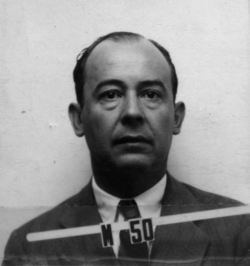
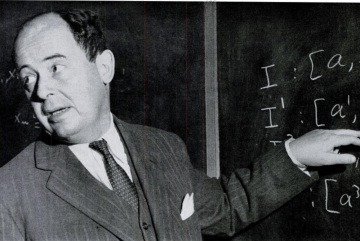








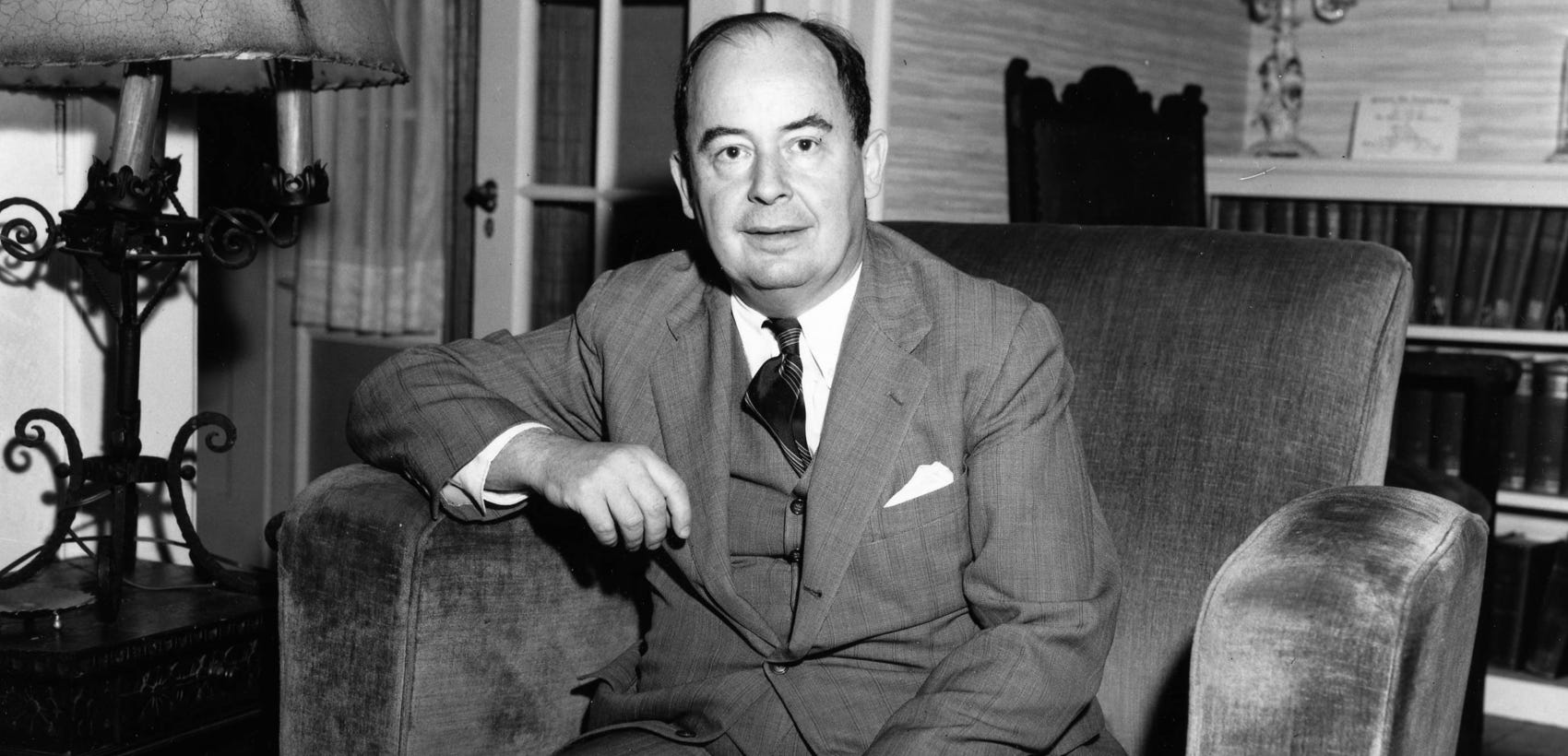


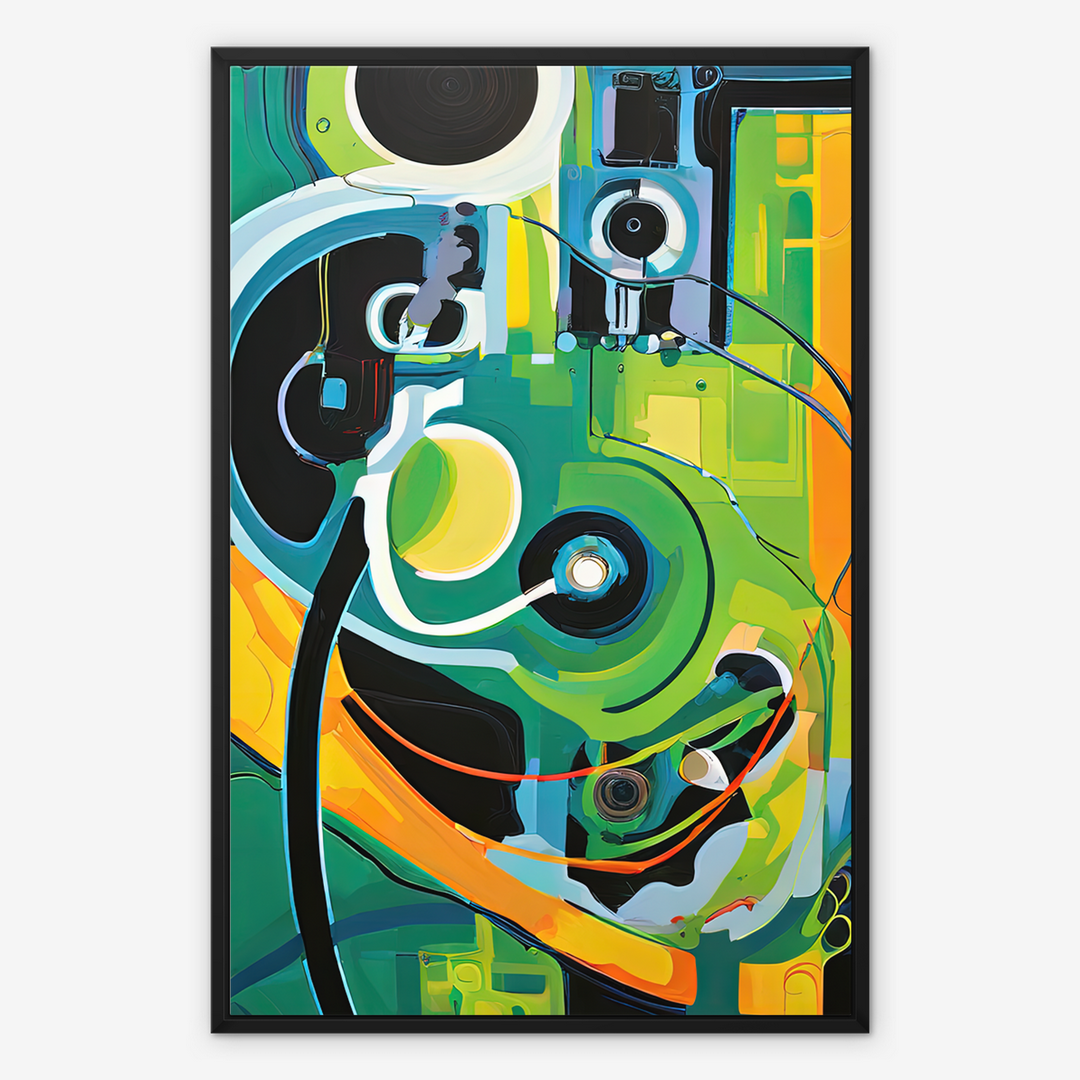
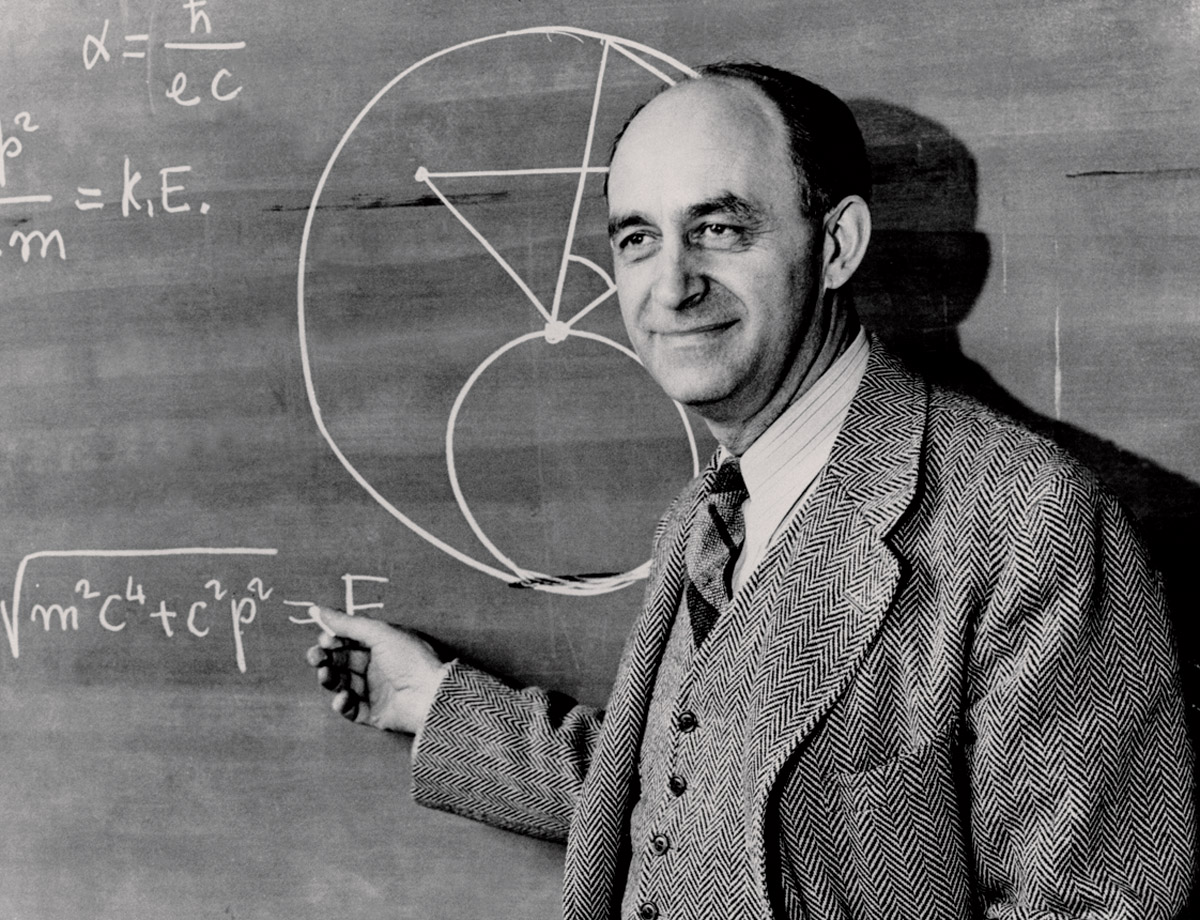




Comments